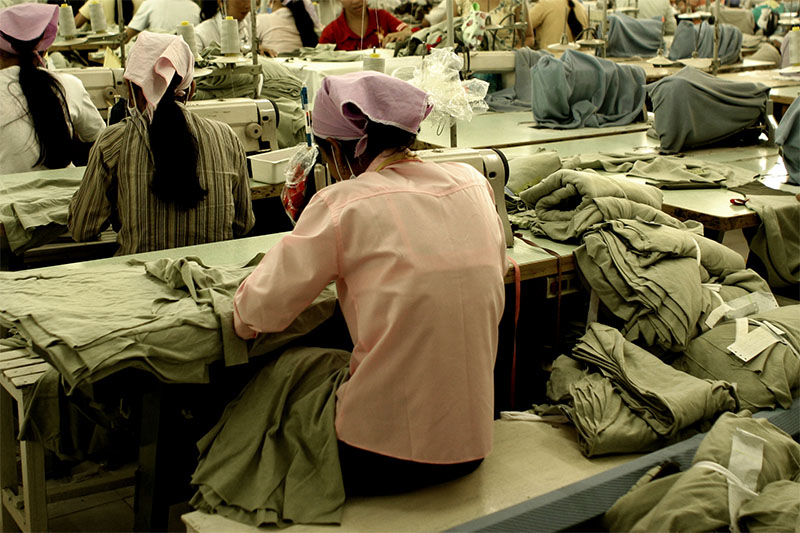The Freedom Fund is finding ways to end slavery in the global supply chain

While slavery in global supply chains remains an ever-growing concern, a new coalition has been successful recently in addressing it…perhaps even finding a solution.
A new report found that a five-year intervention campaign to protect workers in India backed by the Freedom Fund – which works to mobilize the knowledge, capital and will to end slavery – was effective at reducing debt bondage and other forms of exploitation, cutting the percentage of families in bondage from 56 percent to 11 percent in the fund’s focus areas.
The report, “Unlocking What Works: How Community-Based Interventions Are Ending Bonded Labor in India,” presents the findings of four leading institutions – including Harvard University and the U.K. Home Office – that the Freedom Fund’s interventions were effective at stopping labor abuses, protecting workers and changing the structural conditions that enable unfair labor practices.
“Taken together, these evaluations affirm that the power to end modern slavery lies in frontline communities themselves,” said Nick Grono, CEO of the Freedom Fund. “Our programs are having a direct impact in the communities our partners are working in, and they are successfully building on this community-level work to positively change wider policies and systems.”
For its interventions, the Freedom Fund identified areas where unfair labor practices were most likely in northern and southern India, and invested $15 million in more than 40 frontline nongovernmental organizations to conduct direct interventions to protect workers in these “hot spots.” In northern India, where workers in brick kilns and quarries are at risk, it provided $10.7 million in funding for 25 NGOs serving more than 180,000 workers and their families; in southern India, where garment workers are at risk, it provided $5.2 million in funding for 20 NGOs serving more than 93,000 workers and their families.
The NGOs that the Freedom Fund partnered with conducted direct, on-the-ground interventions to free workers from debt bondage and other forced labor conditions. Tactics included creating membership in community groups as alternative sources for loans; creation of adolescent girls’ and women’s financial self-help groups; creation of community vigilance committees to bargain collectively with employers; creation of internal complaint committees to serve as venues for workers to address grievances; and creation of courses to inform workers of their rights and recourse under the law.
Five external evaluations of the Freedom Fund’s interventions were conducted by Harvard University's FXB Center for Health and Human Rights; the U.K. Home Office; the Institute of Development Studies; and the Praxis Institute for Participatory Practices.
The findings of their evaluations of the Freedom Fund’s interventions included the following:
- The prevalence of households in bonded labor fell from 56 percent to 11 percent across northern and southern India
- This reduction in prevalence is equivalent to 125,000 fewer people in bonded labor across the two hotspots
- The percentage of households with children in bonded labor fell from 13 percent to 1 percent in northern India, and from 12 percent to 3 percent in southern India
- Households had 55 percent more savings and 31 percent faster wage growth thanks to the interventions
- Child marriages and school dropouts in southern India fell by more than half during the intervention period
“The intervention led to reduced household debt, increased household savings, higher wage growth, increased access to medical care, increased use of government schemes and improved household food security,” wrote the Harvard evaluators who reviewed the work of a core Freedom Fund partner in northern India. The evaluators from the Institute of Development Studies concluded that the Freedom Fund’s approach, “using a variety of community-based interventions, mobilization and organization, is particularly effective in reducing the prevalence of bondage.”

Article Topics
Latest in Logistics
FTR Shippers Conditions Index enters negative territory DAT March Truckload Volume Index sees modest March gains National diesel average, for week of April 22, is down for the second straight week UPS reports first quarter earnings declines LM Podcast Series: Assessing the freight transportation and logistics markets with Tom Nightingale, AFS Logistics Investor expectations continue to influence supply chain decision-making The Next Big Steps in Supply Chain Digitalization More LogisticsAbout the Author
Subscribe to Logistics Management Magazine

Find out what the world's most innovative companies are doing to improve productivity in their plants and distribution centers.
Start your FREE subscription today.
April 2023 Logistics Management

Latest Resources














